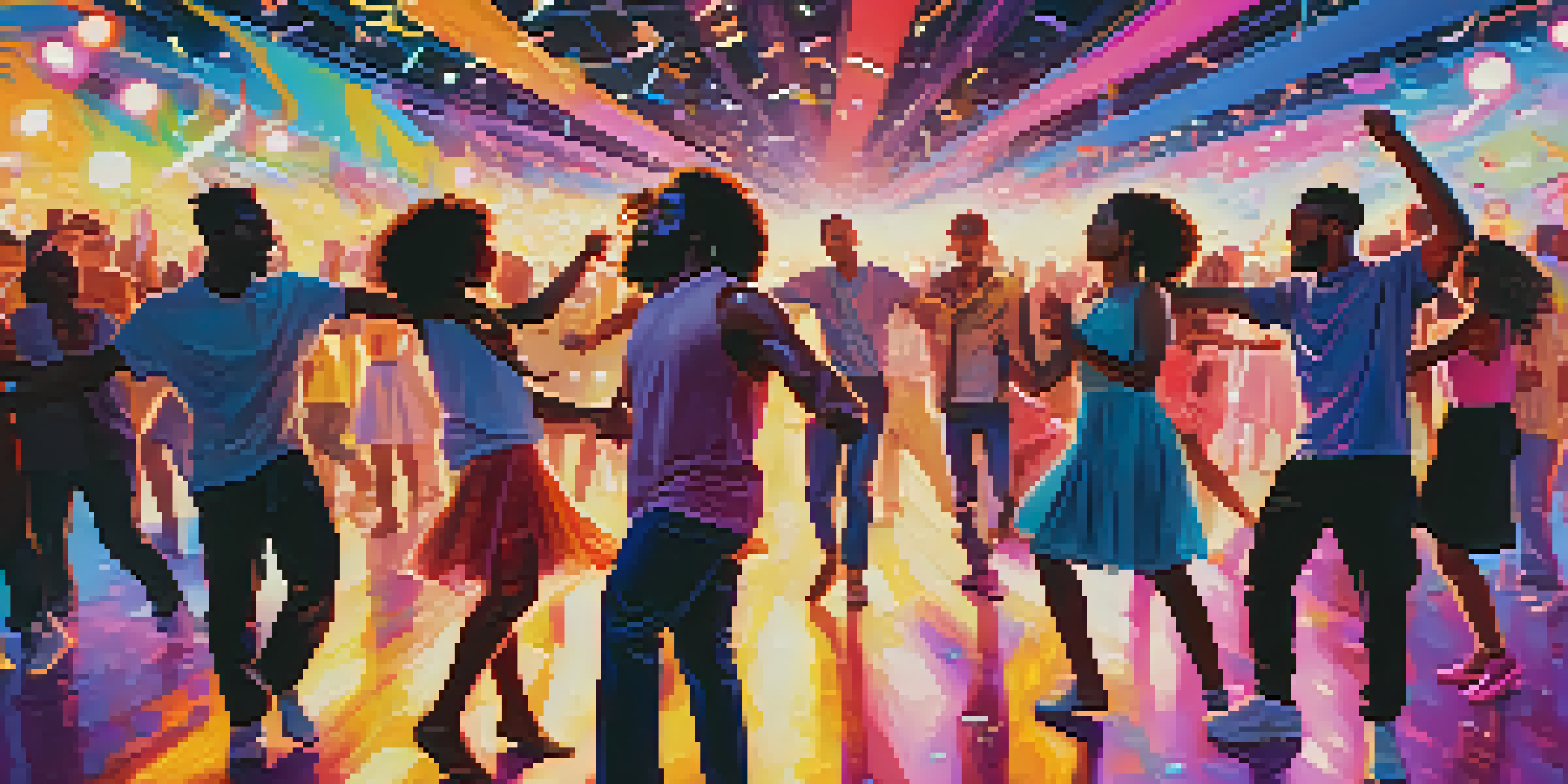Creating Compelling Music Videos: Storytelling Techniques

Understanding the Importance of Story in Music Videos
Every music video tells a story, whether it's explicit or implied. A strong narrative can elevate a song, adding layers of meaning that resonate with viewers. Think of iconic videos like Michael Jackson's 'Thriller' or Beyoncé's 'Lemonade'; they aren't just visuals, but rich stories that enhance the music experience.
Music videos are the new short films that tell stories and evoke emotions.
When viewers connect with a story, they're more likely to remember the song and share it with others. This connection can also evoke emotions, drawing audiences deeper into the music. After all, emotions drive engagement, and a compelling narrative can make a song unforgettable.
Incorporating storytelling into your music video isn’t just a creative choice; it’s a strategic one. It helps differentiate your visual content in a saturated market, making it stand out. So, let’s dive into the storytelling techniques that can make your music videos genuinely compelling.
Creating Relatable Characters for Your Audience
Characters are the heart of any story, and in music videos, they help viewers connect on a personal level. By creating relatable characters, you invite your audience to see themselves in the narrative. This connection can be as simple as showcasing everyday scenarios or as complex as exploring emotional struggles.

For instance, in Taylor Swift's 'Blank Space,' the character embodies both charm and chaos, reflecting relatable themes of love and heartbreak. Viewers can easily identify with the emotions portrayed, making the song and video more impactful. This identification is crucial for fostering a lasting connection with your audience.
Storytelling Enhances Music Videos
Incorporating a strong narrative into music videos adds depth and emotional resonance, making the experience more memorable for viewers.
To create relatable characters, consider your target audience's experiences and emotions. Think about their age, interests, and common challenges they face. Ultimately, the more relatable your characters are, the more likely viewers will engage with your music video.
Developing a Clear Narrative Arc in Your Video
A strong narrative arc is essential for keeping viewers engaged from start to finish. This arc typically includes an introduction, rising action, climax, and resolution. By structuring your video with these elements, you create a satisfying journey that mirrors the song's emotional progression.
A great song is a story waiting to be told visually.
Take a cue from storytelling fundamentals; a well-defined conflict or challenge can make your video more compelling. For example, in the video for 'Someone Like You' by Adele, the emotional buildup leads to a powerful climax that resonates deeply with viewers. This structure not only enhances the music but also makes the video memorable.
As you create your narrative, consider how each scene transitions to maintain flow. Smooth transitions help keep the audience invested in the story, reducing the chances of them losing interest. By maintaining this narrative arc, you ensure that your music video is not only visually appealing but also emotionally engaging.
Utilizing Visual Metaphors to Enhance Storytelling
Visual metaphors are powerful tools in music videos, helping convey complex themes without words. They can add depth and nuance to your story, making it more engaging for viewers. For example, using a storm to symbolize emotional turmoil can create a vivid narrative that resonates universally.
Consider the music video for 'Chasing Cars' by Snow Patrol, where the imagery of lying on a car symbolizes a moment of stillness amidst chaos. This metaphor not only enriches the narrative but also allows viewers to interpret it in their own way. Such layers of meaning invite deeper engagement with the music.
Relatable Characters Drive Connection
Creating relatable characters allows audiences to see themselves in the story, fostering a stronger emotional connection to the music.
When incorporating visual metaphors, think about the core message of your song. How can you represent this visually? By weaving metaphors into your video, you can create a richer storytelling experience that captivates and engages your audience.
Incorporating Emotion to Connect with Viewers
Emotion is the secret sauce that can elevate your music video from good to unforgettable. Whether it’s joy, sorrow, or nostalgia, tapping into these feelings can create a powerful connection with your audience. Consider how your song's lyrics evoke emotions, and find ways to translate that into visual storytelling.
For example, the music video for 'Fix You' by Coldplay uses imagery of support and love, perfectly matching the song's heartfelt message. This emotional alignment helps viewers relate to the song on a personal level, making the video more impactful. When viewers can feel the emotions, they're more likely to share and remember your music.
To evoke emotion, think about the scenes you choose, the actors you cast, and the overall tone of the video. By thoughtfully curating these elements, you can create an emotional journey that resonates deeply with your audience and enhances their connection to the music.
Crafting an Engaging Visual Style to Support the Story
The visual style of your music video should complement the story you’re telling. This includes choices about color palettes, camera angles, and editing techniques. A cohesive visual style not only enhances storytelling but also reinforces the overall mood of the song.
Consider the bold colors and dynamic camera work in the music video for 'Uptown Funk' by Mark Ronson featuring Bruno Mars. The energetic visuals match the upbeat tone of the song, creating an immersive experience that captivates viewers. A well-crafted visual style can elevate the narrative and keep viewers engaged.
Visual Style Supports Narrative
A cohesive visual style, including color and editing choices, enhances storytelling and reinforces the mood of the song.
When developing your visual style, think about how each element can enhance the story. Whether it’s using soft lighting to convey intimacy or quick cuts for excitement, these choices should all serve to support the narrative. Ultimately, a strong visual style will make your music video more appealing and memorable.
Emphasizing the Power of Editing in Storytelling
Editing plays a crucial role in shaping the narrative of your music video. Through careful cuts and transitions, you can control the pacing and mood, guiding viewers through the story. This can be particularly important in music videos, where the rhythm of the song impacts how scenes flow together.
For instance, in the video for 'Bad Blood' by Taylor Swift, the fast-paced editing matches the song’s intense energy, keeping viewers engaged. Effective editing helps emphasize key moments and emotions, ensuring that the audience feels the story unfold in tandem with the music. It’s all about creating a seamless experience that captivates the viewer.

When editing your video, think about the emotional beats of the song. How can you enhance these moments with your editing choices? By aligning the editing rhythm with the music, you can create a powerful storytelling experience that resonates with viewers long after the video ends.